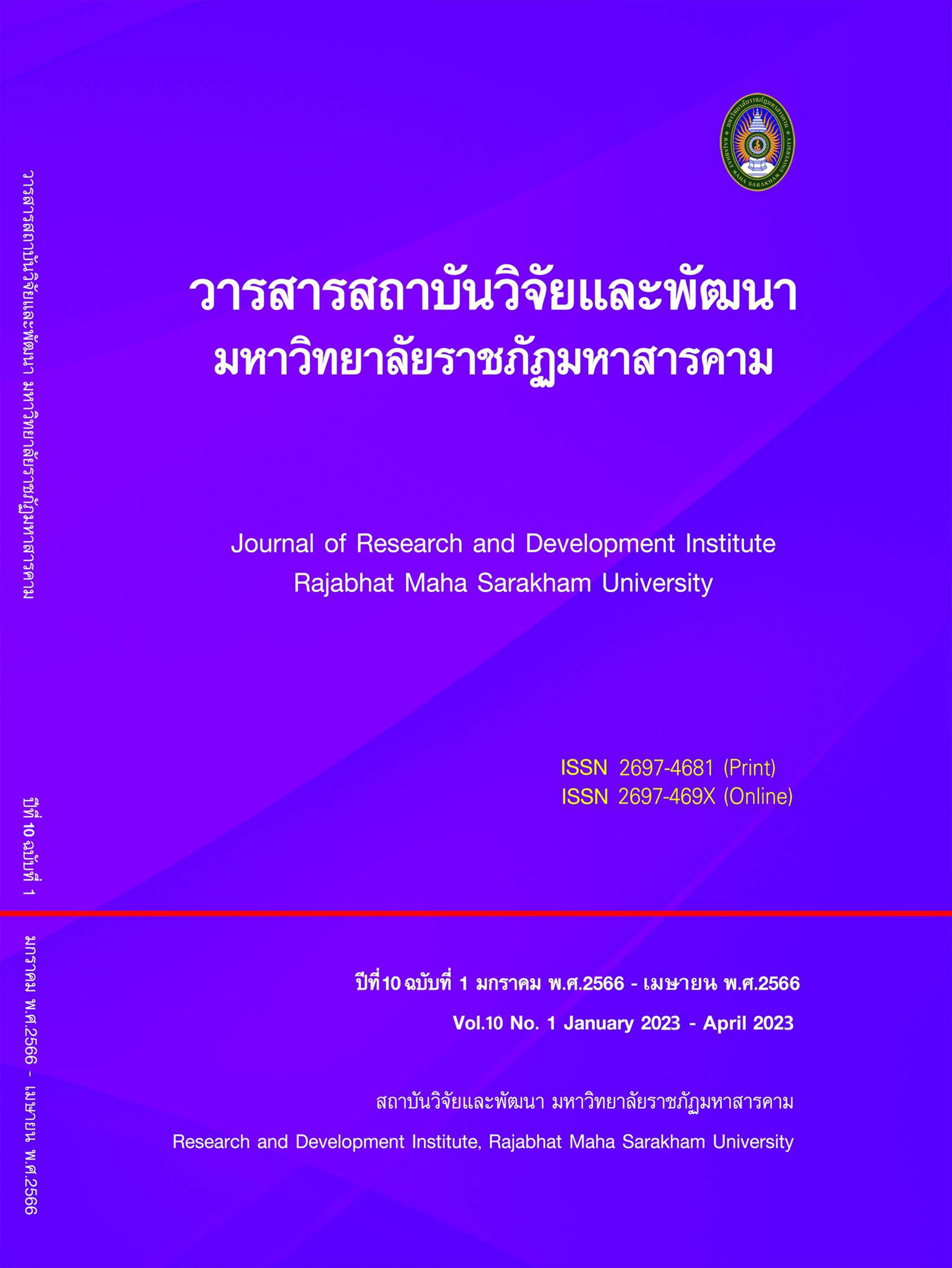Investigation on the Use of Korat Language in Nongrawiang Sub-district, Muang District, Nakhon Ratchasima Province
Keywords:
The use of language, Korat LanguageAbstract
According to Thai customs and traditions, dialect is the language used to express the identity of the local population. The language spoken in Nakhon Ratchasima and the surrounding provinces is a sub-dialect of Isaan, known as Korat Thai. It has distinct qualities. This research aims to study the use of the Korat language in Nongrawiang Sub-district, Muang District, Nakhon Ratchasima Province, and to study the approach of inheriting the Korat language in Nongrawiang Subdistrict, Mueang District, Nakhon Ratchasima Province.
The findings revealed that:
- It was found that Nongrawiang Sub-district, Muang District, Nakhon Ratchasima Province consisted of 15 villages, and every household in all the villages used the Korat language with a clear Korat accent. They used the vocabulary in the Korat dictionary and preserved the Korat language by putting it in a village development plan. In terms of word use, sentence construction, and use of expressions and rhetorics, it was found that most nouns, verbs, pronouns, adverbs, and suffixes were pronounced similarly to the Korat language according to the Korat dictionary. However, some words became obsolete. In terms of sentence construction and the use of expressions or rhetorics, it was found that most of the people of Nongrawiang Sub-district constructed sentences according to the Korat dictionary and still used such sentences in everyday life.
- In terms of inheritance of the Korat language in the Nongrawiang Sub-district, it was found that the Korat language was inherited through everyday communication, teaching in community schools, lullabies, using the Korat language to communicate in local agencies and using the Korat language in writing media, advertisements or public relations in local agencies.
References
Fine Arts Department. (2015). Former Isan. Bangkok: Fine Arts Department.
Nong Rawiang Subdistrict Administrative Organization. (2017). Nong Rawiang sub-district service organization development plan. Nakhon Ratchasima : Nong Rawiang Subdistrict Administrative Organization.
Prasitrathasin, A. (2006). Pinit Thai Trilogy: First Part: Language. Bangkok: Chulalongkorn University.
Rinprom, C. (1977). The phoneme system in the Korat dialect. Bangkok : Chulalongkorn University.
Subongkot, K. (1978). Goods of Korat. Nakhon Ratchasima: Tiger Seal Printing.
Suwansang, S. & Chantow, R. (2016). The Inheritance of Isan Languages. KKU International Journal of Humanities and Social Sciences, Vol. 5(2).
Tankul, S. (2016). Communication to inherit the dialects of ethnic groups in Sakon Nakhon Province. DPU Graduate Studies Journal, Vol. 13(63).
Downloads
Published
How to Cite
Issue
Section
License
Copyright (c) 2023 ชมชนก ธนาวีราภรณ์

This work is licensed under a Creative Commons Attribution-NonCommercial-NoDerivatives 4.0 International License.
Articles that are published are copyrighted by the authors of the articles







